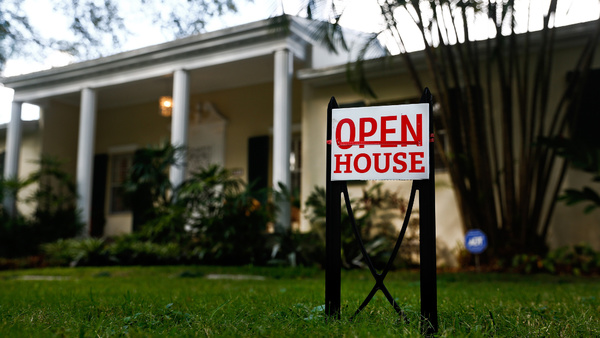
Sales of previously-owned U.S. homes fell in December for the first time in four months, as the market struggles with record-low supply and rising prices, figures from the National Association of Realtors showed Wednesday.
Highlights of Existing-Home Sales (December)
Contract closings declined 3.6% m/m to a 5.57m annual rate (est. 5.7m) after 5.81m Median sales price increased 5.8% y/y to $246,800 Inventory of available properties fell 10.3% y/y to 1.48m, a record low in data going back to 1999 2017 sales of 5.51m were up 1.1% from 2016, smallest gain in three years
Key Takeaways
The decline, deeper than economists estimated, indicates inventory issues across the U.S. are limiting Americans’ ability to purchase despite low mortgage rates and a solid job market. Higher prices spell lower affordability, particularly for first-time buyers: The median selling price rose 5.8% in 2017, easily outpacing wage gains. Government data show the number of building permits last year was the highest in a decade, indicating a pipeline of new properties that could help alleviate the supply crunch.
While NAR said there was no discernible impact in December, some prospective buyers may be discouraged by the tax legislation signed into law last month, which limits the deductions for mortgage interest and property taxes — key incentives for homeowners in some areas. The tax law is likely to dent housing activity and prices though probably not enough to have a meaningful effect on the broader U.S. economy, JPMorgan Chase & Co. economists said last month.
Official’s View
“Inventory concerns remain with us,” with no immediate sign of a reversal, Paul Bishop, NAR’s vice president of research, said at a press briefing accompanying the report. The December figures also reflect a squeeze on affordability, even as demand continues apace due to solid job growth and low mortgage rates, Bishop said. “Price growth is going to be a little slower than it might have been without the tax reform,” and sales in 2018 are forecast to be little changed at 5.52 million, he said.
What Economists Say
A sharp decline in existing home sales follows a considerable improvement in the beginning of the fourth quarter and by no means undermines Bloomberg Economics’ expectations for a strong showing of residential investment in fourth-quarter GDP. BE expects residential investment to rise 10% in the fourth quarter and contribute close to 40 bps to growth. A surge in housing demand in the wake of last year’s hurricanes depleted supply of available properties in the beginning of December to record low levels, which weighed on home sales across the country. — Yelena Shulyatyeva, Bloomberg Economics
Other Details
December sales fell in all four regions, led by a 7.5 percent drop in the Northeast and a 6.3% decline in the Midwest At the current pace, it would take 3.2 months to sell all available homes on the market, a record low in data going back to 1999; Realtors group considers less than five months’ supply consistent with a tight market Single-family home sales fell 2.6% to annual rate of 4.96 million Purchases of condominium and co-op units dropped 11.6% to a 610,000 pace Existing home sales account for 90% of the market and are calculated when a contract closes. New-home sales, considered a timelier indicator though their share is only about 10%, are tabulated when contracts get signed.


